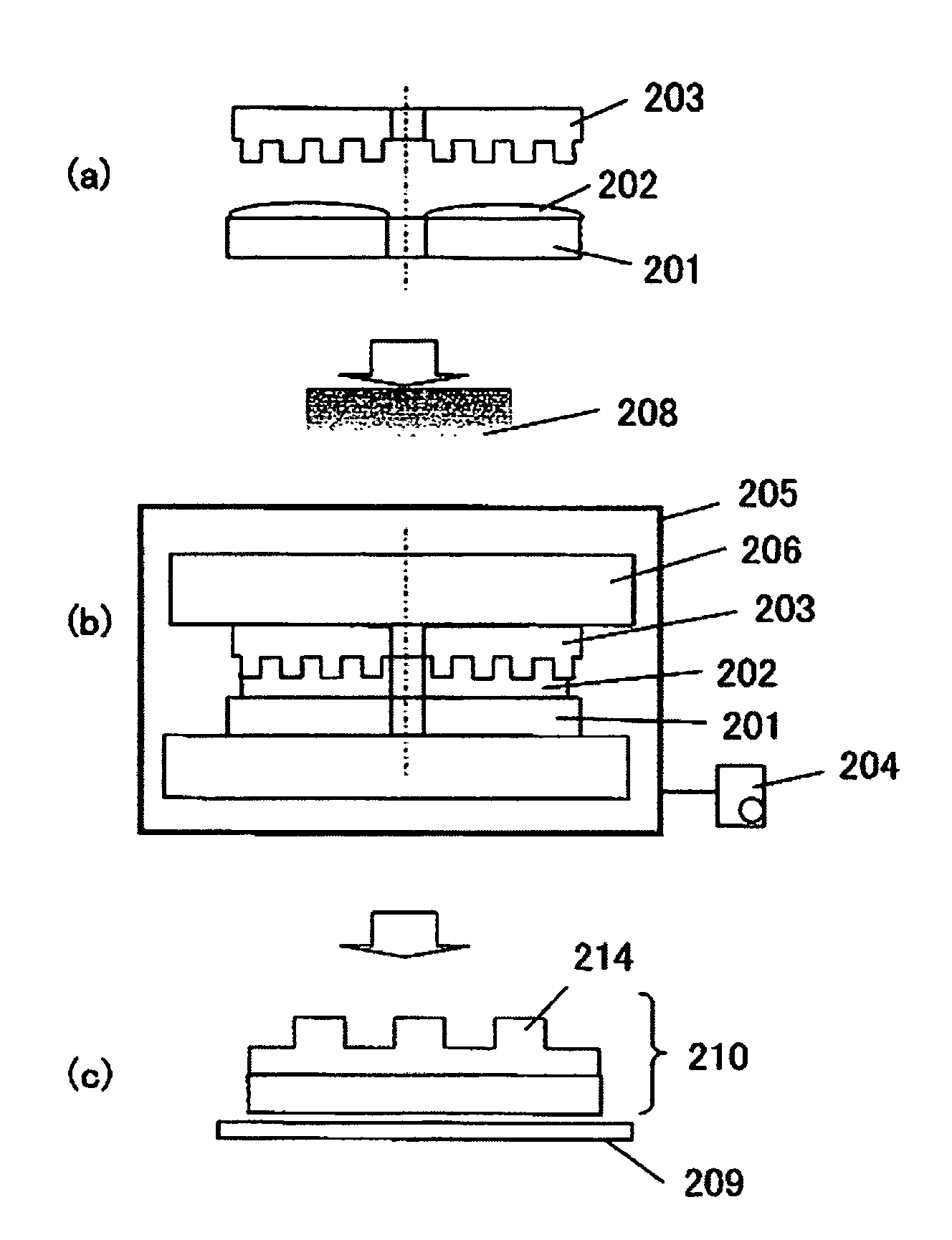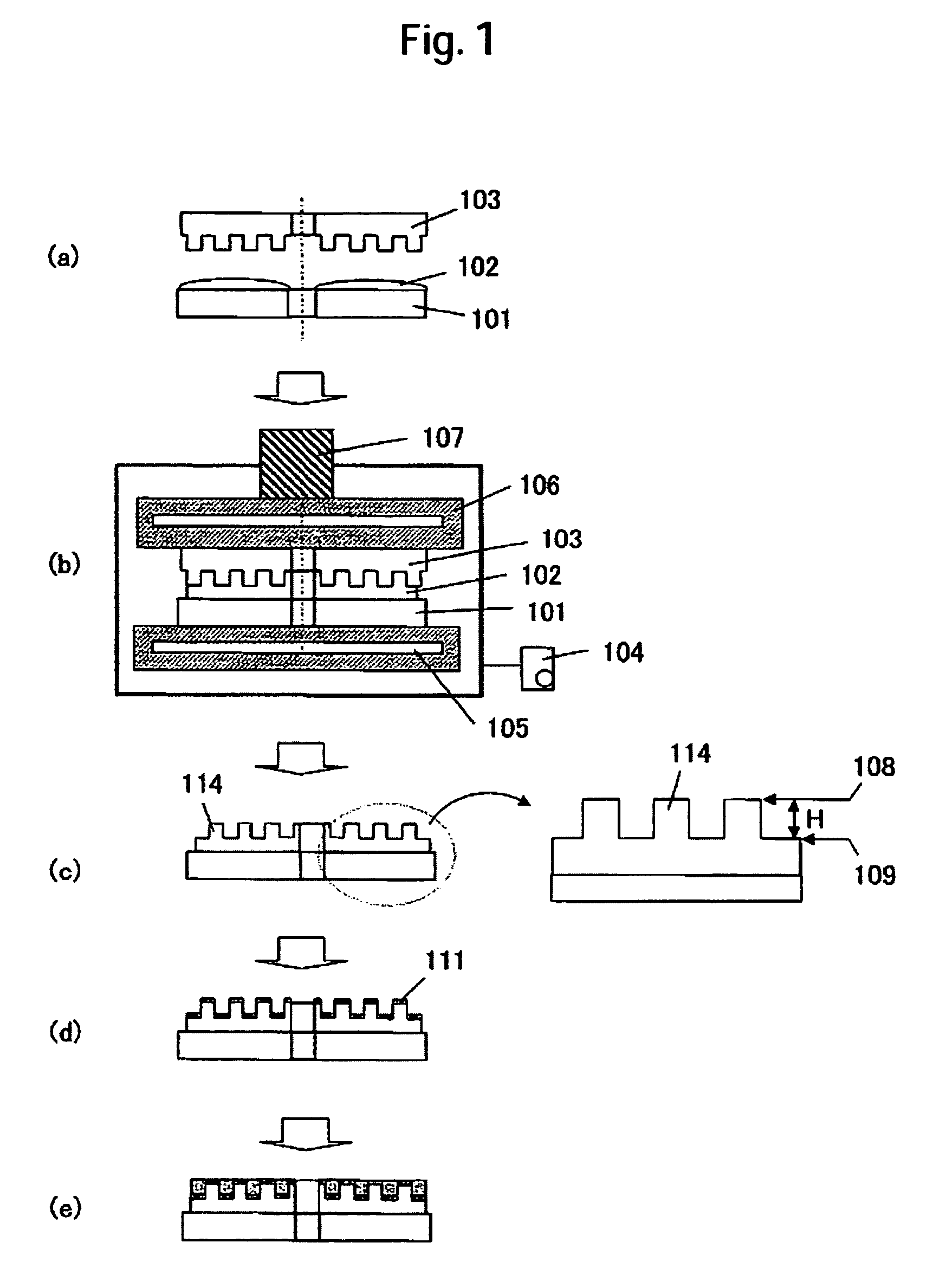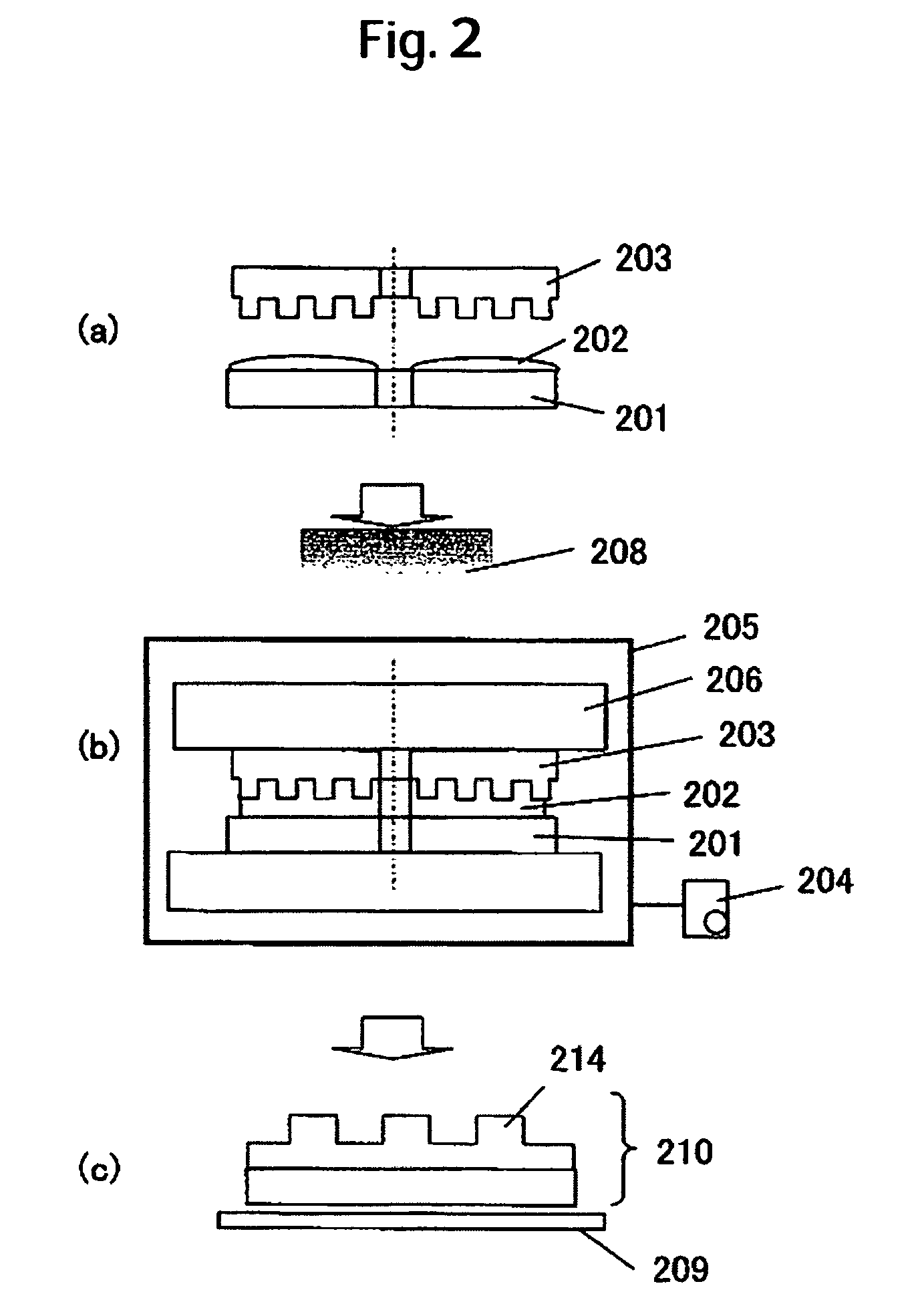Magnetic recording medium and method for production thereof
a technology of magnetic recording medium and magnetic recording medium, which is applied in the direction of magnetic materials for record carriers, instruments, record information storage, etc., can solve the problems of low productivity, inability to heat up above the melting point after shaping, and poor mechanical strength and chemical stability of resist or thermoplastic resin directly used to form the recessed relief structure on the substrate, so as to reduce the production cost of magnetic recording medium, increase hardness, and ensure adhesion to the substrate
- Summary
- Abstract
- Description
- Claims
- Application Information
AI Technical Summary
Benefits of technology
Problems solved by technology
Method used
Image
Examples
example 1
[0021]FIG. 1 is a schematic diagram illustrating the process of making the magnetic recording medium according to the present invention. This example demonstrates the production of a magnetic recording medium of discrete track medium in which individual tracks are magnetically divided. The method shown in this example is applicable also to the production of a magnetic recording medium of patterned bit type. (Detailed description is omitted.)
[0022]Step 1: First, a substrate 101 shown in FIG. 1(a) was made ready for processing. It is a commercial flat glass disk measuring 0.635 mm in thickness and 65 mm in diameter and having a hardness of 700 Hv. It has a central hole, 20 mm in diameter, to facilitate its mounting on a hard disk drive. Processing started with cleaning, which was followed by oxygen treatment to improve the wettability of the surface of the substrate 101. Incidentally, oxygen treatment may be replaced by any other adequate method because the wettability is determined o...
example 2
[0038]FIG. 2 is a schematic diagram illustrating the process of producing the magnetic recording medium according to the present invention. This example demonstrates the production of the so-called discrete track recording medium which has magnetically divided recording tracks.
[0039]Step 1: The substrate 201 shown in FIG. 2(a) is a chemical tempered glass disk, 0.635 mm in thickness and 65 mm in diameter. The substrate has limited restrictions on the concentration of impurities thereon because the recording medium according to the present invention has an intermediary body. In this example, the material for the substrate was selected from those which have a high surface hardness, but it was not examined for the concentrations of residues on the substrate surface. The substrate 201 has a previously made hole, 20 mm in diameter, at its center. This hole facilitates the mounting on the hard disk drive. The substrate 201 underwent cleaning and then oxygen treatment (which makes the subs...
example 3
[0067]FIG. 4 is a schematic diagram illustrating the magnetic recording unit equipped with the magnetic recording medium 401 obtained according to the present invention. The magnetic recording medium 401 is attached to the spindle 402 so that it turns around the axis. The recording medium 401 used in this example is a PM which has both tracks and bits that are patterned therein.
[0068]The recording head used in this example is a so-called perpendicular head of single pole type (SPT). The head is comprised of a main magnetic pole of soft magnetic material and a coil of copper alloy. The tip of the main magnetic pole is made of cobalt-alloy having a saturation magnetic flux density (Bs) of 2.4 T. The read head uses a sensor film for giant magnetoresistance effect (GMR). This sensor film may be replaced by any other one for tunnel magnetoresistance effect. The recording and read heads are provided with cables for signal input and output. Signals are exchanged with the signal processing ...
PUM
| Property | Measurement | Unit |
|---|---|---|
| thickness | aaaaa | aaaaa |
| RA | aaaaa | aaaaa |
| temperature | aaaaa | aaaaa |
Abstract
Description
Claims
Application Information
 Login to View More
Login to View More - R&D
- Intellectual Property
- Life Sciences
- Materials
- Tech Scout
- Unparalleled Data Quality
- Higher Quality Content
- 60% Fewer Hallucinations
Browse by: Latest US Patents, China's latest patents, Technical Efficacy Thesaurus, Application Domain, Technology Topic, Popular Technical Reports.
© 2025 PatSnap. All rights reserved.Legal|Privacy policy|Modern Slavery Act Transparency Statement|Sitemap|About US| Contact US: help@patsnap.com



